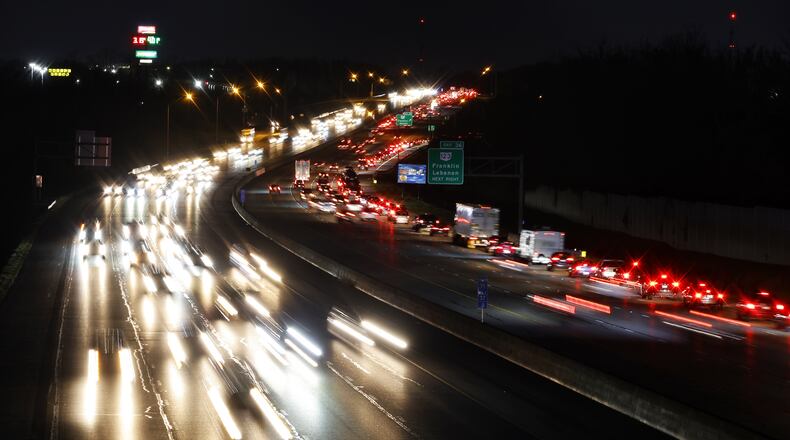The state projects the Dayton region will have many of its roads experience traffic causing slowdowns, including State Route 4, Interstate 75, U.S. 35, and several other roads around the city center. Many more roads would be added to that list if more than 150,000 visitors come to Ohio.
Even with just 150,000 out-of-state gazers, traffic is expected to start early, especially around Dayton, and especially on I-75. There’s expected to be slowdowns as early as 7 a.m., with various points of I-75 projected to be near a standstill starting at 8 a.m. and worsening throughout the day.
Further south, particularly below the I-75 and I-675 interchange, traffic will maintain a heavy flow throughout the day as it shuttles southern visitors in and out of Ohio. The state projects that the interchange could be effectively blocked as early as 8 a.m.
Even further south, heading into Butler County, I-75′s traffic is expected to peak after the eclipse in the afternoon and stay that way for hours.
Springfield, which will see totality for about 2 minutes and 37 seconds around 3:10 p.m., is expected to fare better than Dayton traffic-wise, though several roads will still see slowdowns. Interstate 70 running south of the city is expected to bear most of the traffic brunt, peaking in the early afternoon.
The April 8 total solar eclipse is expected to bring a breathtaking celestial show to Ohio, along with hundreds of thousands of out-of-state visitors in a flood that is sure to back up traffic throughout the Miami Valley.
The path of totality — that is, a continuous stretch of land over which the moon will fully block the sun — will start on the western Mexican coast around 2 p.m. EST and curve its way up through the U.S., hitting Dayton around 3:09 p.m. and lasting for just under three minutes before continuing its journey through much of Ohio and exiting the country at the head of Maine, according to NASA. Anyone outside that path will see a partial eclipse.
It’s a rare phenomenon, not to be seen again in the U.S. until 2044, and the state is expecting anywhere from 150,000 to over 575,000 out-of-state visitors to come take advantage of the opportunity.
Follow DDN statehouse reporter Avery Kreemer on X or reach out to him at Avery.Kreemer@coxinc.com or at 614-981-1422.
About the Author

